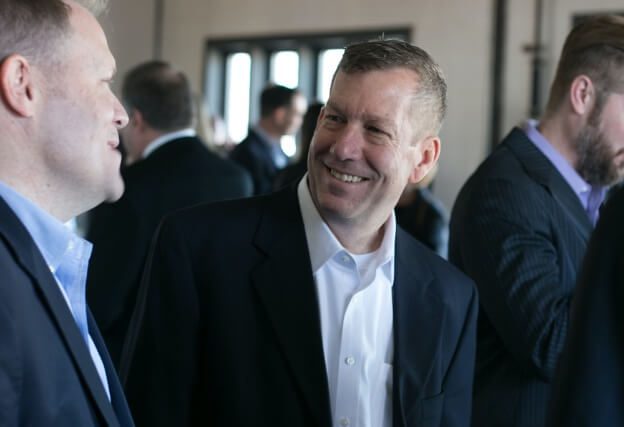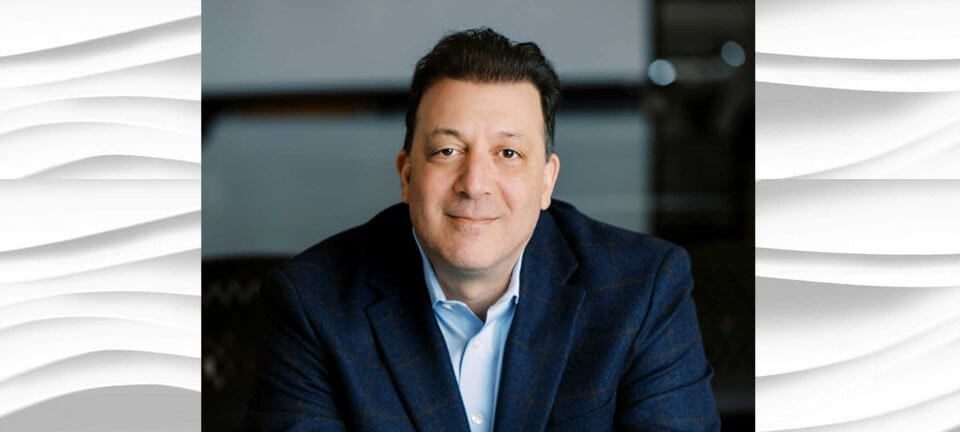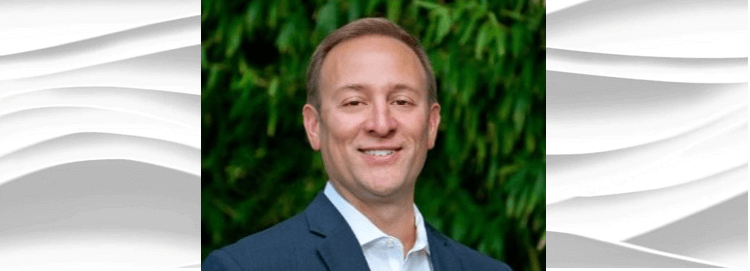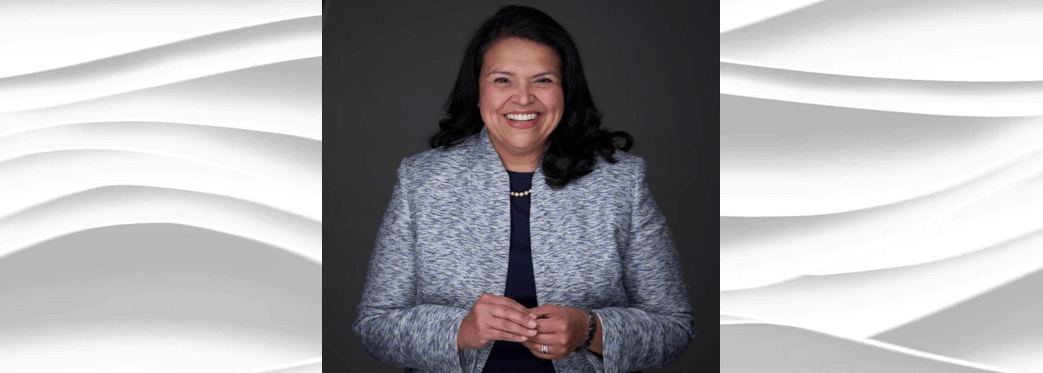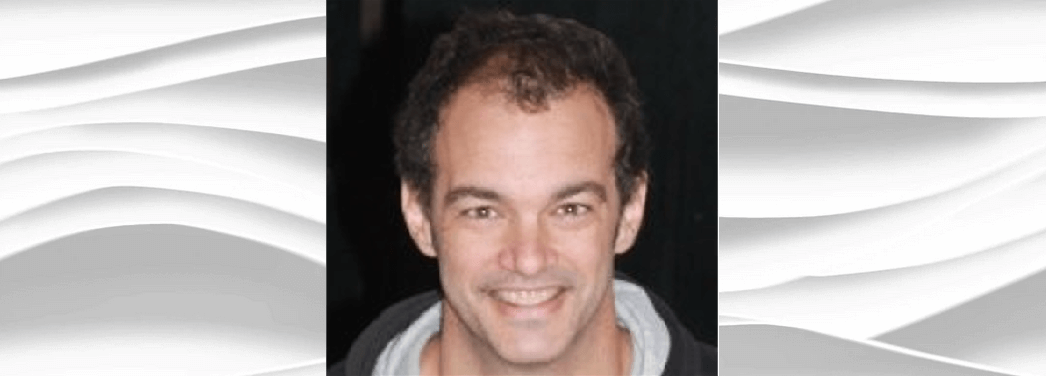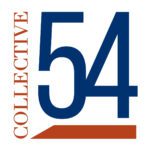The quality of the executive leadership team is paramount as professional services firms grow, scale, and exit. In this episode, we speak with Matt Rosen, founder, and CEO of Allata. He shares how he structured his executive team to replicate himself, developed a succession plan, and spent time working on the vision of the future.
TRANSCRIPT
Greg Alexander [00:00:15] Welcome to the Boutique with Collective 54, a podcast for founders and leaders of boutique professional services firms. For those that don’t know us, Collective 54 is the first mastermind community to help you grow, scale and exit your firm bigger and faster.
My name is Greg Alexander. I’m the founder, and I’ll be your host today. And on this episode, we have the privilege of talking to Matt Rosen and the leader of a company called Allata, which I’ll introduce in a moment. We’re going to talk about building a quality management team, and how he’s done that at his firm and hopefully learn a few things along the way. So, Matt, it’s good to see you. Would you introduce yourself to the audience, please?
Matt Rosen [00:00:54] Yeah. Thanks for having me on the show, Greg. So my name is Matt Rosen, and I’m the founder and CEO of Allata. Allata is a tech consulting firm based in Dallas with offices in Pheonix, Boise, and Provo. And what we do is we help companies with their most complex technology initiatives from a strategy, architecture, development, and data standpoint.
Greg Alexander [00:01:14] Okay, awesome. And Matt, when did you find the firm to grow?
Matt Rosen [00:01:18] I founded the firm back in 2006. It was just myself and a developer. And now we’re over 220 people and growing quickly.
Greg Alexander [00:01:25] It’s an incredible story. It really is. Congratulations on all that. So let me set up the topic because I asked you that question about when you founded it and where you are today because you’ve scaled so fast. And I think one of the reasons why you’ve done that is because you’ve been able to build a quality management team, and I’ve had the privilege of meeting a few of them.
And it’s a big subject because sometimes, founders that are growing like that hit a bottleneck eventually. And that is, they’re kind of the hero within a group of helpers. It doesn’t work, you know. There’s just too much work for one person. And you got to hire senior people or develop senior people. You have to give them enough autonomy to make the contributions that they need to make, empower them to be successful. And I think you’ve done a really good job with that.
So I’d like to start with an opening question, which is at a high level, explain to the audience kind of the organizational structure of your leadership team that reports to you by role. Maybe, I don’t know if you need to mention names, what by role? And tell me how you came to that conclusion and why you built it the way you built it.
The Structure of an Executive Leadership Team Matters
Matt Rosen [00:02:35] So where we’re at today is I really have three direct reports. I have a chief strategy officer and she owns sales,marketing,go to market offerings as well as our partnerships. I have a chief technology officer and he’s really looking forward to the technology direction, what new trends d we should be jumping on. He’s also my personal helpdesk when I run into issues. And then I’ve got a chief operating officer, so the Office Leadership Report is sent to him.
So I have leaders for four different groups in the company. There’s Dallas, Pheonix, Virtual and Boise, and then he’s got all our back office functions from recruiting, H.R to finance. And so really everything falls to the three of them. And underneath them they’ve got leadership structures and sales and marketing, especially at a delivery level. There’s four group leaders that almost all the consulting resources roll into.
And then we’ve got practice lead. So for strategy, for architecture, for product and design, for technology solutions and for data, we’ve got vice presidents that head up each of those service lines, if you will, and people are really matrixed across the organization into their office leaders, as well as the practice leaders.
Greg Alexander [00:03:51] What I find remarkable about your story is you’ve been around five or six years. You’ve grown like crazy, and yet you personally only have three direct reports. Now, I know underneath those three, they have their teams, but that’s pretty remarkable.
Sometimes I see guys and gals like you with eight to ten , and they’re living almost miserable lives because there are not enough hours in the day. So how did you get it so tight to only three?
A Professional Services Firm Needs Great Leaders
Matt Rosen [00:04:18] Well, you have to have really good leaders. I mean, that’s really what it comes down to. You’ve got to have people that you can set goals for. You know, I’m not a micromanager. I’m not even really a macro manager. I said high level goals, and I get the heck out of the way. I hire bright people, you know, I do have one-on-ones with the three of them.
And I probably talk to the layer below them at least every other week. But, you know, we’ve got a real structured way in which we do a sales meeting every Monday. We do an operations meeting every Tuesday. I’m always in on those, or people are sending me a synopsis of them. So it gives me just enough information really to run the firm. And it took a while to really trust folks and hand things off, especially in the sales arena.
That was based on one of the recommendations you made when I was early on in the Collective was, “You’ve got to stop being the hero sales guy.” That was really hard for me to let go of, but I finally have found a leader who came from a large firm, and she brought a lot of process with her and is now leading the sales team and is a very effective seller herself.
A lot of it comes down to finding people that are great at doing the things that you don’t or can’t do well, empowering them to do their job, and staying out of their way unless they’re just not meeting their goals. They know that people are going to do things the way you do them. And that’s okay.
Greg Alexander [00:05:27] Yep. Okay. So, awesome story. I’m really proud of you for what you did on the sale side, and it was hard for you to let go because you enjoyed it. I remember talking just.
Matt Rosen [00:05:37] I still get involved. I still get pulled in from time to time, but I’m not actively leading sales cycles. I’m spinning them up from time to time but I’m handing them off.
Greg Alexander [00:05:44] Yeah. And it’s tough to let go of the things that you really like to do. So that’s a great story to hear that you’re doing that. I know that your company is not for sale, but given your growth, I imagine the phone rings. And one of the things that potential acquirers are always looking at as part of their diligence is the quality of the management team.
So if someone came to you with an offer you couldn’t refuse, you know, some crazy number that you’d be ridiculous if you didn’t take it. Do you know who your successor is and who you would hand the firm over to? Or would you plan on staying after the sale? And then if you were to hand it off, does everybody get pulled up the org chart, so to speak, so that the thing doesn’t fall apart post-sale?
Matt Rosen [00:06:28] That’s a great question. You know, we’re not for sale. If some crazy offer came along, I would foresee myself sticking around for a couple of years to make sure that there was a smooth transition integration. Ultimately, I built this firm because I didn’t want to work for others, and know I wanted to build a firm that was sustainable and successful with or without me.
So, you know, there definitely is a succession plan in place that we’re executing on. There’s definitely a couple of folks that could, with some training and tenure, probably step into my shoes. Nobody’s replaceable. It takes time for them to grow into the role.
And what we’ve got is a really good mix of people that were career consultants and a mix of people that were in the industry. I had a lot of clients that were VPs about those that I was going to work for me. You’ve got this really nice group of leaders that have either consulted their whole careers or sat on the side of the desk of those that we’re selling to. That adds a lot of credibility when working with clients.
How Professional Services Firm Owners Can Leverage Executive Leadership Teams to Their Advantage
Greg Alexander [00:07:25] Awesome. Glad to hear that. Sometimes when I talk to members and I suggest that they do what you’ve done, I hear particularly from maybe the younger firms, those that haven’t reached the scale that you’ve reached. They say, “Well if I have all these people that are going to do all this stuff, what am I going to do?” Which I tell them, “Hold on, you know, you’ll have plenty. If things go well, you’ll never ask that question again. There’s going to be too much to do.”
So now that you have put this great team in place and you’ve elevated yourself, what do you personally spend your time on?
Matt Rosen [00:08:01] You know, I spend my time thinking about where we need to head next. From a company’s perspective, what geos we might want to go into, what offerings we might want to have. I spend time visiting with a lot of our larger clients and spending time with them just understanding what’s important to them. Like a lot of them are my close personal friends. I spend time talking with leaders as they need, you know, strategic advice.
You know, they might call me and say, “Hey, we’ve got this situation. What do you think?” And they run things by me, you know. By putting this great leadership team in place, it allows me to actually get out and, you know, play a round of golf every now and again, which I hadn’t done in about 20 years.
So that’s kind of nice fun that, you know, folks like you or, you know, clients that like to get out there as well and enjoy a walk ruined by golf. But, you know, there’s always things you can be working on, looking for ways to make the firm better or, you know, taking leadership courses.
Um, you know, doing interviews such as this, and really being a thought leader in your space as well as looking for how can you grow the firm maybe through M&A. So we’re actively talking to a couple of companies that might be accretive and be good partners for us as we grow.
The Importance of Letting Go When Building a Leadership Team
Greg Alexander [00:09:10] Yeah. So listeners what we just heard there is that Matt spends his time on the business, not in the business, spends a little time in the business in the right spots, but he has a team that’s doing that for him. So he’s pursuing the vision, the future. And unless somebody is dedicated to that vision, the future, it never happens. You are just constantly in reaction mode.
Matt is being proactive now and he’s leading. He’s not managing. There’s a difference between managing and leading. And what we’re hearing from Matt today is he’s leading, which is a great role model for all of us to follow. Got one more question regarding the management team and the structure in particular.
I know when I went through this process that you have gone through the thing that I was less willing to give up and I clung to the most, which was a flaw, and I didn’t do it the right way. This was a mistake. It came to investment decisions when money was going to get spent. I held on to this money like it was my first communion money. I was unwilling to let anybody, you know, make those decisions other than me. How is that handled in your firm? Do you approve all expenses or do people have authority to do these types of things?
Matt Rosen [00:10:23] So in this, I would say over the last twelve to eighteen months, we’ve moved to a budget. As long as people are spending what’s in that budget, there is not a problem with it. In fact, they put the budget in, in some respects, to control me from spending too much on different things.
Greg Alexander [00:10:36] But the budget was for you.
Matt Rosen [00:10:38] So that was actually from a year ago. But we’re doing a good job and you know, we’re performing ahead of plan as a result of it. So, no, you know, again, that comes back to empowering people. I mean, the only thing I’ve not given up is, you know, I’m the only one that sends wires.
But other than that, people have corporate cards, they have budgets they can spend on what they need, we have a good controller, you know, authorizes money to go out. And so most of that I’ve given up and people make a lot of decisions where we spend that budget that’s been allocated without my involvement.
How Does Allata Create a Budget for its Professional Services Firm?
Greg Alexander [00:11:10] Yeah. Interesting. That’s really inspiring. In the budget process, it sounds like this is a relatively new thing, let’s say, in the last couple of years. So how do you guys create the budget? Is it done once a year? Is it done at the beginning of the year, or the end of the year? How does all that work?
Matt Rosen [00:11:26] Yeah, it gets done, you know, as the year is wrapping up. So towards the end of 2021, we set the budget for 2022. You know, we reviewed it with the group leaders. You know, we had them put in things that they wanted. We were meeting with sales and marketing and the, you know, the practice leads and everyone kind of put in their wish list, and we kind of whittle it down to what we thought we could spend in addition to where we think we could achieve from a revenue top-line standpoint.
And so we review it monthly, we do at the end of each month kind of a financial review, see how we’re tracking. And you know, if we’re doing ahead of plan, we might spend more on certain things or make more investments in certain areas. But the big you know, the big thing for 2022 is making sure we’re focused on EBITDA, building a sustainable organization and, you know, spending where we need to and not spending where we shouldn’t. Yeah.
Greg Alexander [00:12:17] It’s great that you review it monthly. It’s kind of like a variance-to-plan type meeting.
Matt Rosen [00:12:22] Absolutely. We go through line by line in the major categories, see where we are under, and see where we are over. And you know, we adjust as necessary as we go into the next month, and at least for January, we’re on track. We’ll see how we’re doing for February next week. Yeah.
Greg Alexander [00:12:36] You know, the hardest part about budgeting for me was the forecasting part of it. You know, it’s easy to look at what’s happened and you can do the variance to plan on that. But then if someone says, “Hey, what’s going to happen in six months?”
It’s tough because professional services can be a little lumpy. And, you know, it’s not as much forward visibility as we might like. Have you implemented any type of forecasting system that sits on top of the budget that predicts the future? And if so, how’s that going so far?
Matt Rosen [00:13:02] You know, it’s really a combination of two tools. You know, we’ve got a CRM tool, as most organizations do, and we try and put it in as much as we know. We’ve got, you know, kind of a four-stage sales process and just waited. So, we’ve got that, kind of that weighted pipeline. And we’re always trying to have 2 to 3 X or revenue plan and we do pipeline. It never turns out to be that much because we tend to be a little bit conservative, but we have that weighted forecast of all the deals that are in the pipeline, what’s coming as well as our forecast of what we think clients are going to do between now and the end of the calendar year.
And then we invest in a professional services automation tool that allows us to see weekly how we’re tracking a plan, making sure hours are up to date. We also have some modeling scenarios where we can figure out, you know, based on the people we have available, you know, what type of team can we put together, what’s their profitability? Because for the longest time we only understood margin at a company level. We didn’t understand it at a project or client level.
And now we have that visibility and that visibility is allowing us to make smarter decisions. You know, I think about consulting hours. It’s like bananas. They spoil at the end of each month. So you’ve really got to manage them tightly and ensure that you’re watching them and leveraging them and try not to leave anything behind. Yeah.
Greg Alexander [00:14:15] Question on the PSA platform, which I’m so glad to hear that you’ve installed. I’m a big advocate and I think it really helps, particularly on those two items, project and client level profitability and managing that inventory. What advice would you have for younger, smaller firms on when it’s appropriate to progress to the point where you would install a professional services automation tool?
Matt Rosen [00:14:41] When the Excel spreadsheet starts breaking.
Greg Alexander [00:14:44] Which happens early. Yeah.
Matt Rosen [00:14:48] It was probably better. My team had to push me for years and I don’t mind mentioning the tool. We were able to cut a pretty good deal with them and they had professional services that helped us implement it. The challenge is you do have to take someone senior and have them help line your implementation.
So it is an investment, one that I had to be pushed on for a while. I should have done that sooner. We probably would have actually been a bit more profitable. I probably waited a year or two too long. But now that we have it and we are seeing returns from it, we are capturing time that we weren’t previously.
It’s allowing us to model up skill sets and understand where we need to be investing. You know, it probably is something we should have done two years prior and my team pushed me for it, but I held off because I wasn’t ready to make the investment. But I’m glad they finally pushed me to do that. That mix of harvest and spreadsheets was no longer getting the job done for 200 plus people.
Greg Alexander [00:15:44] Yeah, exactly. Well, listen, man, you’re absolutely knocking it out of the park. I mean, every single thing you’re supposed to be doing to be on the business and scaling the business is working really great. And your results back it up.
And I want to, on behalf of the membership, just thank you publicly. This is a big contribution. You’re a role model for many. And hearing your story and how quickly you’ve gotten to this point is an inspiration. So thanks for being on the show.
Matt Rosen [00:16:10] Yeah, thanks for having me on the show, Greg. Appreciate it.
Greg Alexander [00:16:13] All right. And for those that are interested in learning more about this subject, building a quality management team, and others like it, pick up the book. It’s called The Boutique: How to Start, Scale, and Sell a Professional Services Firm. You can find it on Amazon. And for those that are listening that want to meet really bright professional services owners like Matt, consider joining our community. You can find it at collective54.com. Thanks again, Matt. Take care. Matt Rosen [00:16:36] Thanks. Take it easy.


